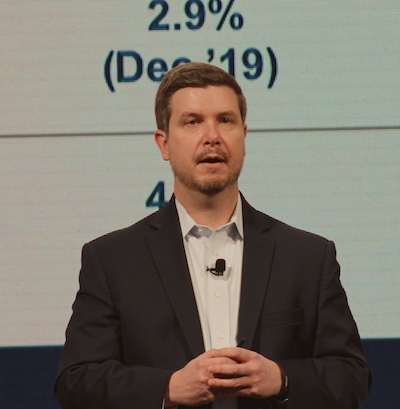 September total new vehicle sales were up 6.1 percent year over year, with two more selling days compared to September 2019.
September total new vehicle sales were up 6.1 percent year over year, with two more selling days compared to September 2019.
Wholesale used-vehicle prices (on a mix-, mileage-, and seasonally adjusted basis) decreased 1.58 percent month over month in September, the first month-over-month drop in wholesale values since May. The Manheim Used Vehicle Value Index for September was 161.2, a 15.2 percent increase from a year ago.
Manheim Market Report (MMR) prices declined at an accelerating pace over the four full weeks of September, resulting in a 2.9 percent cumulative decline on the Three-Year-Old Index. In the last full week of September, the Three-Year-Old Index declined 0.9 percent, which was the biggest weekly decline in 22 weeks. MMR Retention, which is the average difference in price relative to current MMR, averaged 99.5 percent for the four full weeks of September. The sales conversion rate averaged 58.8 percent over the same period, which was a decline from August and much more typical for this time of the year.
On a year-over-year basis, all major market segments saw seasonally adjusted price increases in September. Luxury cars and pickup trucks outperformed the overall market, while most other major segments underperformed the overall market.

“After three consecutive months of record-setting price gains this spring and summer, used-vehicle wholesale prices cooled slightly in September,” said Cox Automotive Chief Economist Jonathan Smoke. “Higher wholesale prices were supported by strong retail demand and below-normal levels of supply that eased in September as seasonal demand normalized and supply increased modestly.”
According to Cox Automotive estimates, total used-vehicle sales volume was down 5 percent year over year in September. The seasonally adjusted annual rate (SAAR) of used vehicle sales in September is estimated to be 38.0 million, down from 39.8 million last September and flat compared to August. The September used retail SAAR estimate—a measure of used vehicles sold at dealerships—is 20.2 million, down from 20.7 million last year and slightly down month over month from August’s 20.3 million rate.
Using a rolling seven-day estimate of supply based on vAuto data, used retail supply peaked at 115 days on April 8. Normal used retail supply is about 44 days’ supply. It ended September at 42 days, a bit lower than normal. Wholesale supply peaked at 149 days on April 9, when normal supply is 23. It was up to 26 days by the end of September, as the wholesale sales pace has slowed since August.
September total new vehicle sales were up 6.1 percent year over year, with two more selling days compared to September 2019. The September SAAR came in at 16.3 million, a decrease from last year’s 17.1 million but up from August’s 15.2 million rate.
Combined sales into large rental, commercial, and government buyers were down 34 percent year over year in September. Sales into government fleets was up 40 percent year over year in September, while commercial sales dropped 6 percent and sales into rental fleets dropped 62 percent.
Retail deliveries, on the other hand, were up 13 percent year over year in September, leading to an estimated retail SAAR of 14.5 million, up from 14.2 million last September and up from August’s 13.8 million rate. Year to date retail deliveries are down 14 percent through September; fleet sales are down 41 percent. The overall new vehicle market is down 19 percent year-to-date in 2020.
New vehicle inventories increased in September to approximately 2.6 million units.
The average price for rental risk units sold at auction in September was up 5.4 percent year over year. Rental risk prices were down 4 percent compared to August. Average mileage for rental risk units in September, at 42,600 miles, was down 9 percent compared to a year ago and up 8 percent month over month.